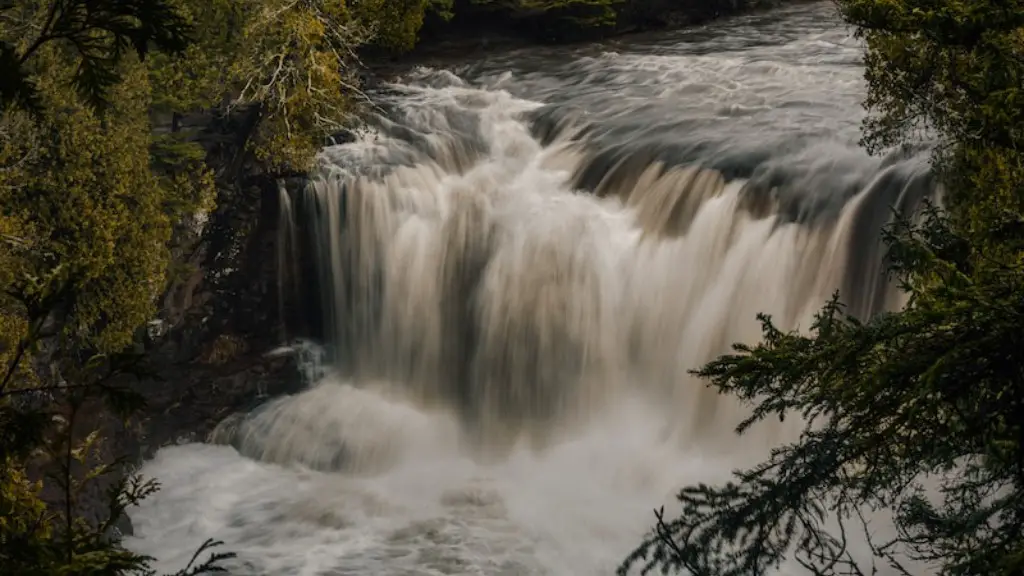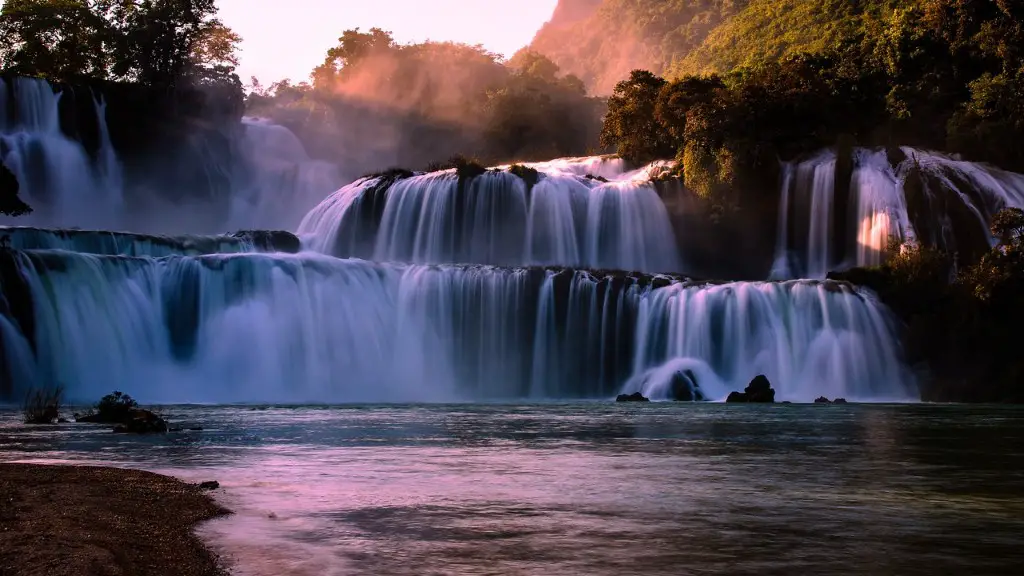The mighty Mississippi river is one of the most iconic rivers in the world, stretching its meandering banks over 3,730 kilometres. It flows from its source in northern Minnesota, USA, across 10 US states, eventually emptying into the Gulf of Mexico through Louisiana. Along the way, it has had a major impact on the region’s development and growth, and today, it’s one of the most scenic and picturesque rivers in the world.
For centuries, the Mississippi river was the main transportation route for the area, allowing settlers to move westward, and providing the people of the Midwest with a wealth of resources. For many of these early settlers, the river made life easier and provided them with many opportunities for trade and commerce. But, as the years passed, the river’s length and power began to be seen as a hindrance to the region’s development. In many places, the course of the Mississippi was altered, with canals and locks constructed to control its movement and prevent flooding.
Today, the Mississippi river is a major source of power generation, with power stations located along its banks providing electricity to millions of people. It is also a key navigational route for shipping and transportation, with ports and harbours along the river providing access to the Midwest and beyond. Additionally, the river provides an important water source for the region, providing irrigation and drinking water for thousands of households.
However, the Mississippi river is not just an important economic resource; it is also steeped in history. It has been the inspiration for many of the most famous stories and novels of American literature, and its beauty and grandeur have been celebrated in art, music and literature. For many, the Mississippi River is an icon, representing the spirit of exploration, determination and adventure.
But, it is also a source of concern for the millions who live along its banks. With its length, the river experiences frequent flooding, which can cause significant damage to homes, businesses and farmland. To help control this, the US Army Corps of Engineers has installed levees and dams along the river to help reduce the risk of flooding, and to protect communities. But, these measures are not always successful, and when the waters do rise, the consequences can be devastating.
Effects of Pollution
Pollution has been a problem for the Mississippi river for many years. Between industrial and agricultural pollutants, municipal sewage and agricultural waste, the river often carries pollutants from hundreds of miles away. These pollutants not only have a damaging effect on the environment and wildlife, but also pose a significant health risk for people and animals who rely on the river for their water supply.
To reduce the amount of pollution entering the Mississippi river, a number of measures have been put in place. These include the implementation of stricter regulations on industrial and agricultural activities and improved wastewater treatment systems. Additionally, public awareness campaigns have been launched to educate people about the importance of responsible water use, and to reduce the amount of waste entering the river.
However, despite these measures, it remains a challenge to keep the river clean. A recent study by the University of Mississippi indicated that the river still contains high levels of pollutants such as mercury, lead and arsenic, and it is estimated that more than 8 million metric tons of pollutants enter the Mississippi every year.
Effects on Wildlife
The Mississippi river is home to a diverse range of wildlife. From birds and fish to mammals, the river provides a rich habitat for a wide variety of creatures. Unfortunately, the pollution of the river has had a detrimental effect on its wildlife, as pollutants such as phosphates, nitrates and pesticides can accumulate in the water and affect the food chain.
Additionally, habitat destruction is a major threat to wildlife, with human activities such as dredging, channel widening and dam construction taking a toll on the river’s ecosystem. This has resulted in the loss of important habitats which some species rely on for their survival.
To protect the wildlife of the Mississippi river, conservation plans and regulations have been put in place. These have included the protection of habitats such as wetlands and floodplains, and the implementation of laws limiting activities such as dredging, mining and fishing. These measures have been effective in protecting some species, though more needs to be done if we are to preserve the river’s unique ecosystem.
Flooding
The Mississippi river is prone to flooding, and has seen some of the largest and most devastating floods in history. Since the early 1900s, more than a hundred thousand people have been affected by floodwaters. The most recent, in 2011, caused billions of dollars in damage to homes, businesses and agriculture.
To reduce the risk of flooding, the US Army Corps of Engineers has erected a system of levees and dams along the river. These are designed to contain the river’s flow, and to protect the communities that live along its banks. However, these measures can only do so much, and there are times when flooding is unavoidable. In these cases, the only thing that can be done is to minimise the damage and respond quickly to the situation.
Tourism
The Mississippi river is one of the most iconic waterways in the world, and its beauty and grandeur have drawn visitors from all over the world. From nature lovers to history buffs, the river has something to offer everyone. The Great River Road is a popular route to drive along the river, providing stunning vistas and a unique glimpse into the region’s past. The Mississippi also provides access to dozens of national parks, offering a wealth of camping and hiking opportunities.
But, the Mississippi is more than just a scenic drive; it is also an important economic resource. Its ports and harbours provide access to Europe and the rest of the world, and its waterway is crucial to shipping, transportation and commerce. In addition, the river has been an important source of power, providing electricity to millions of people in the Midwest and beyond.
Environmental Impact
Despite the many benefits of the Mississippi river, its length and power have also had a major impact on the environment. As mentioned above, pollution and habitat destruction have been an issue for many years, and the river has often been afflicted with large amounts of toxic substances. Additionally, the construction of dams and levees has disrupted the natural flow of the river, causing erosion and disruption to the area’s natural biodiversity.
To address these issues, a number of steps have been taken. This includes the implementation of stricter regulations on activities such as dredging, mining and fishing, and improved wastewater treatment systems. More recently, lawmakers and environmental agencies have put together initiatives to restore the river’s natural ecosystem, such as reforesting the riverbanks and restoring wetlands.
Conclusion
The Mississippi river is an iconic waterway that has shaped the history, culture and economy of the Midwest. It is a source of power, trade and recreation, and a symbol of the spirit of exploration, determination and adventure. But, despite its many benefits, it is also a source of environmental concern, with pollution, habitat destruction and a risk of flooding all posing a threat to the health and wellbeing of the people and wildlife that rely on it.




